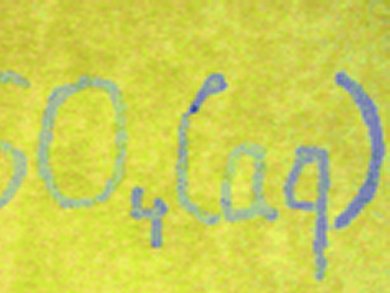In 2011 the former Central Intelligence Agency (CIA) officer Leon Panetta resolved the confidentiality of records which were seen as American state secret for 93 years. These included many recipes to prepare a variety of secret inks. Emanuel Krahl and Matthias Ducci, PH Karlsruhe, Germany, selected some of the instructions and looked at the chemistry involved. They show that this historical material used by the intelligence service fits well into modern chemistry lessons.
The inks described in the CIA document include very trivial secret inks like citric acid: „Run a warm iron over the surface. Discloses … the juice of Lemons …”.
Other inks are based on copper sulfate solution, tetrachloromethane, iron chloride (processed with potassium thiocyanate or tannin solution), and – a German formula – on alum and garlic juice.
The brown-black color of the writing mainly results from the decomposition products of cellulose, which was partly hydrolyzed due to the acidic solution of the invisible ink. The acidic nature is based on the aluminum ions which act as acid cation:
[Al(H2O)6]3+(aq) + H2O(l) <—> [Al(H2O)5OH]2+(aq) + H3O+(aq)
In addition, brown decomposition products of the garlic juice add to the discoloration. Both liquids (garlic juice and alum solution) may also be used on their own as a sympathetic invisible ink. The alum solution develops a much more intense effect after drying than the garlic juice. After heating it only leads to a pale brown discoloration of the paper.
- „A German Formula“ – Rezepte für Geheimtinten aus den Archiven der CIA,
Emanuel Krahl, Matthias Ducci,
Chemkon 2013, 20 (4), 163–168.
DOI: 10.1002/ckon.201310208




